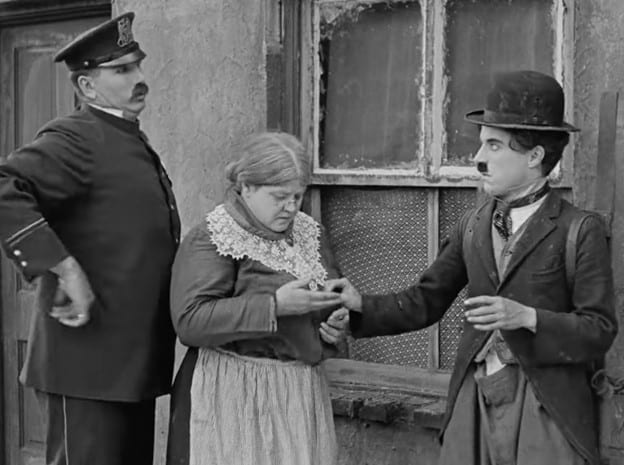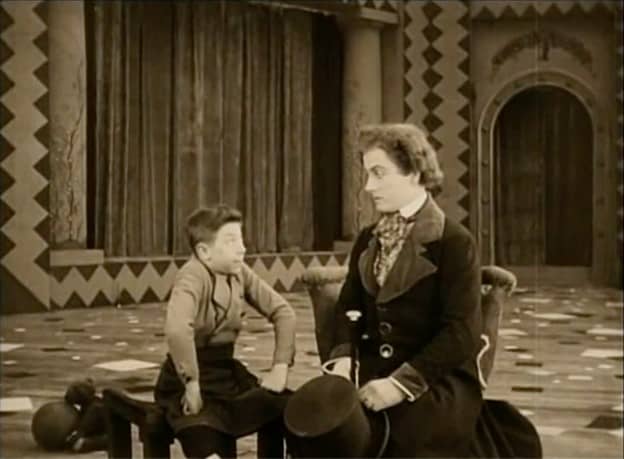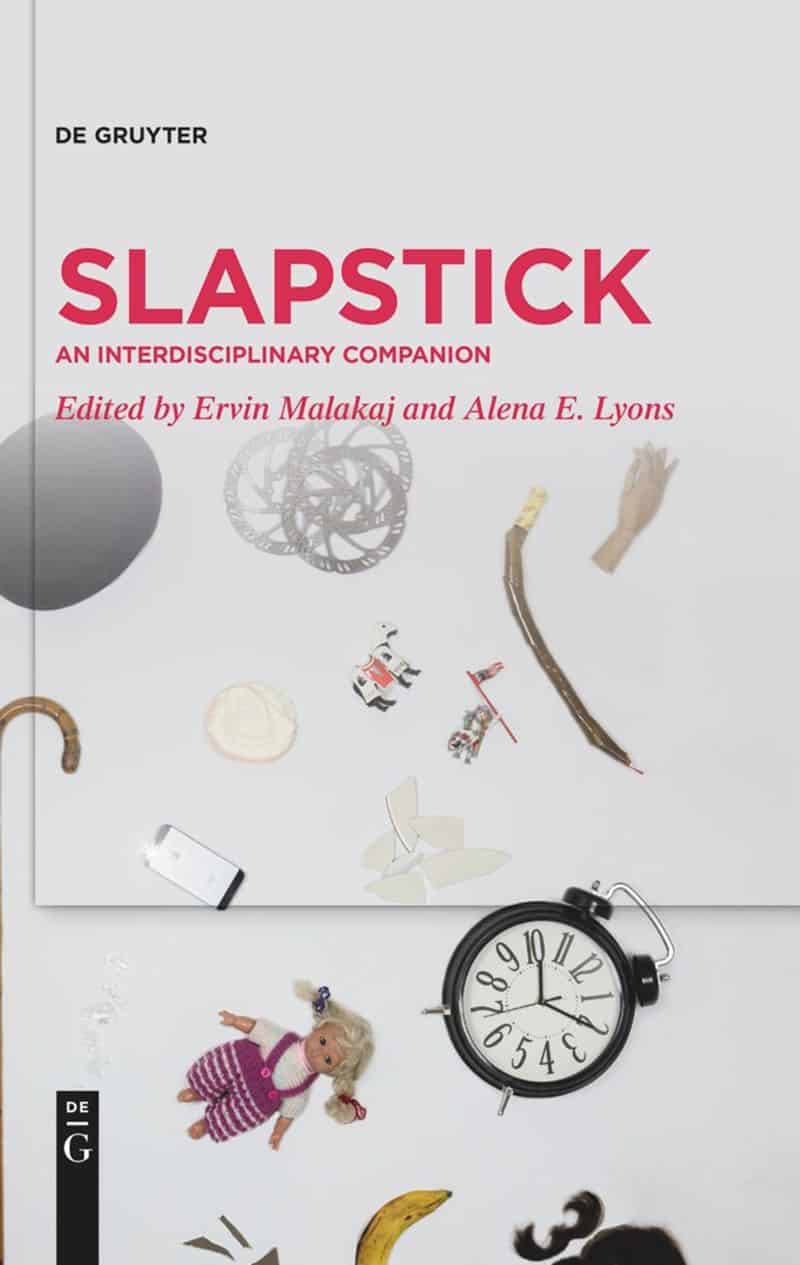What Can We Learn From Slapstick Comedy?
Despite its “simple” appearance, there is more to slapstick than meets the eye. Besides a whole lot of mishaps and mischief, slapstick movies and figures such as Charlie Chaplin's famous Tramp provide us with unique perspectives on social issues and power hierarchies.
Humor is culturally conditioned. Over the course of our lives, we are expected to learn why, when, and how to laugh. Those not part of our particular cultures of laughter can have a hard time with them. Denied the chance to engage with and learn about our humor, they could be disadvantaged, even harmed by it.
Consequently, while humor can help some of us to cope with life, it might make life difficult for others. It is demanding and treacherous, riddled with sandtraps, pitfalls, banana peels, and flying pies, each of which has the potential to cause embarrassment and ridicule. The logic such humor follows can feel strange (even violating) for some people. It is certainly not fun for everyone.
But most of us manage humor somehow. In some cultures, slapstick, a form of body-oriented comedy, usually belongs to the earliest experiences with humor. As one doesn’t need advanced linguistic skills to understand and appreciate its wit, slapstick is rather inclusive for various people early on.
For instance, one does not need refined concentration or good memory to interact with slapstick. We don’t have to recall all elements of a complex plot including its various characters in order to enjoy a gag. Slapstick likewise does not require its audiences to be extensively educated on a particular matter in order to recognize the humorous dynamic at its core.
“Despite its ‘simplicity,’ the enjoyment of slapstick, while not forbidden, can be problematic.”
However, despite its “simplicity,” the enjoyment of slapstick, while not forbidden, can be problematic. Some people frown upon slapstick’s reach, which might render its fans unsophisticated. For such critics, slapstick seems to speak to those who care little for morality or who ignore the fact that the typical game of exaggeration and understatement—often in direct response to physical pain—is somehow quite brutal. Does slapstick not bring about a reckless type of Schadenfreude when its audiences quite unashamedly laugh about its crass material?
Moreover, slapstick can trigger uneasiness in audiences by sometimes not having an agenda or message. The addressee or the function of the laughter it generates is not always clear. And so, we might ask ourselves what the point is of this amusement, really, if—as it seems—it serves no purpose beyond itself? Is that not anarchy?
And so, despite its simple appearance, slapstick is really not that simple. A lot can be at stake. A gag can create a lighthearted atmosphere, while simultaneously calling attention to pressing social issues. Consequently, we might be interested in examining what formal features of slapstick produce laughter. Or we could consider what relation that laughter has to the severity of the social issues at the heart of the slapstick scenario organizing a given gag.
Take, for instance, Charlie Chaplin’s famous slapstick comedy The Kid (USA, 1921). Chaplin, in the role of the Tramp, becomes a caretaker of an abandoned child (played by Jackie Coogan). Living in poverty, the two characters develop an illicit two-step scheme by which to earn money. First, the kid breaks the glass on the windows of random houses. Shortly thereafter the Tramp arrives on the crime scene, conveniently equipped with all the materials required for repairing the windows in exchange for payment. A homeowner might lament the unfortunate situation initially, but she is ultimately grateful for the convenient service.

Problems arise when a police officer discovers the scheme. The clever plot irritates a legal system that could put an end to it. And yet, the Tramp’s nervousness in the face of the law tempers the otherwise lighthearted mood of the scenario only momentarily. After all, the world of slapstick shields characters from severe punishment—or, rather, slapstick scenarios reduce the effects of power and violence.
And so the Tramp’s nonchalant approach to the scheme in moments leading up to and shortly after facing the law embodies a type of resistance to power both ridiculous from the vantage point of the “real” world and astonishing for viewers simultaneously.

The Tramp’s force-resistant body then becomes a key means by which it allows us to relish a fantasy in which severe social issues can be overcome. The perils of poverty, child abandonment, single motherhood, compulsory criminality, and bullying, among other serious matters at the heart of The Kid, find expression in a storyworld that at times can seem hopelessly optimistic. And yet, slapstick does not offer clear solutions to the social issues it raises. Instead, it becomes a means by which viewers can examine them.
Hesitant Heterosexuality in the Slapstick Cinema of Ernst Lubitsch
The slapstick comedies of Ernst Lubitsch offer another prime site at which to examine the rich multidirectionality of the genre’s formal and political capacities. In Die Puppe (The Doll, Germany, 1919), which premiered two months before Robert Wiene’s infamous Das Cabinet des Dr. Caligari (The Cabinet of Dr. Caligari, Germany, 1920), Lubitsch draws on expressionist aesthetics and slapstick humor to relay a story about a man afraid of the demands of adult life.
Our protagonist, Lancelot (Hermann Thimig), might bear the name of a fearless knight, but he frequently suffers from fussiness, fear, and petty frustration. For instance, he is devastated upon discovering that he is not only to inherit the estate of a rich uncle, the Baron of Chanterelle (Max Kronert), but that the inheritance also comes with a condition: Lancelot must marry a woman to secure the future lineage of the family. The very thought compels the protagonist to run away from his obligations and take shelter in a monastery. The monks there suggest he turn to technology as a solution to his problem: purchasing a mechanical doll that could stand in as his wife would satisfy familial obligations while keeping Lancelot at a safe distance away from women.
When Lancelot arrives at the workshop of the puppet maker Hilarius (Victor Janson), he is greeted by a boy apprentice (Gerhard Ritterband). Lancelot’s obvious concern about the plan meets the enthusiasm of a rather virile young man: the apprentice lusts after the puppet maker’s daughter, Ossi (Ossi Oswalda). This tension between Lancelot and the apprentice highlights Lancelot’s hesitance to pursue the scripted heterosexual future his uncle devised for him.

In comparison to the boy’s natural lustfulness, Lancelot’s hesitant (even repulsive) relation to women is presented as queer in as far as it points to the character’s disgust with the institution of heterosexuality. Here, slapstick inversion (the boy is the man, the man the boy) leads to a critique of the pressures of heterosexuality on bodies and minds of those seeking other relations.
No Upside-Down: The Blurred Subjects and Objects of Slapstick
So, there is no such thing as simple slapstick. On the one hand, slapstick offers various techniques and strategies to stage, as discussed above, essential aspects of social life in modernity, depicting them in their contradictions, violence, or complexity. Its comedy indeed reveals, defuses, subverts, or transforms the power hierarchies inherent in these structures into something absolutely surprising—at least for the duration of the gag or plot that organizes it.
“Wherever bodies and their being-in-the-world can be represented and staged, slapstick can also be found.”
Moreover, slapstick’s techniques and strategies are not necessarily tied to a particular genre (such as film or theater). Wherever bodies and their being-in-the-world can be represented and staged, slapstick can also be found. And so, we encounter slapstick beyond those traditional genres, for example in literature or in photography.
However, slapstick mediation is conditioned by the art form that gives it shape. For example, whereas in cinema the staging of the slapstick body takes place via recourse to the narrative structures that contain the cinematic gag, photography captures a single moment. As such, photography’s visual material dissolves the deployment of the slapstick body from narrative structures we know from movies.
Even if basic narrative structural elements cannot be ignored when discussing how viewers encounter photography—because we ultimately always fall back on the narrative in the reflective role as viewers, thinking it retrospectively back into what is shown in order to talk about the image—the encounter between body and material environment moves more decisively into the foreground.
In the field of music, we encounter something similar: in principle, the musical drama or opera works with similar dramatic and narrative means to a motion picture film. But while photography reduces its structuring elements to the single image, in music a decisive element is added: the music itself. It not only stages the action, but equally leads to its interruption. For those preferring a fluid development of a given story, the numerous arias that interrupt such a story in a time-stretching or pausing manner are annoying. On the musical level, they are intended to demonstrate both compositional and vocal skill. On a dramatic level, they provide emotional intensification. Instead of advancing the plot, such moments in operatic texts focus on the complex expression of a high-intensity emotional state.
In the comic context, the body of the singer, that is, the slapstick body, encounters the material of the sound that they themself produce (quite a parallel to the cinematic slapstick situation, which is often brought about by the protagonist themself). Here, the part is composed in such a way that the process of singing must appear comical (e.g., in terms of unavoidable, exaggerated facial expressions) or must be comically staged. In contrast to what the aria classically aims to accomplish, in the comic opera or the comic musical drama, removed from a context of narrative content, it can create a slapstick body on the subversive meta-level in which the body is dominated by sound.
But how exactly can a photograph, a passage in a comic opera, or a piece of literature be about slapstick? In fact, it is about a very specific way of shaping an encounter between subject and object. At stake is their respective status as subject or object. A look at a scene from an iconic slapstick film—Charlie Chaplin’s Modern Times (USA, 1936)—illustrates this particularly well. In this scene, the Tramp, an assembly line worker, is in danger of losing his mind because of the banality of his work and dances and walks through the dangerous factory, but ultimately remains physically unharmed.

Intuitively, we assume that the Tramp is the subject in this scene. As a human being—i.e., as the being who is alive, active, and thinking and because he is the figurative center of the film—the Tramp embodies qualities that correspond to our modern notions of subjectivity. But the Tramp does not take control of his life. He is not shown as a sovereign subject with agency over work. Instead, the material work environment consisting of machine objects guides him through its rhythms and procedural demands.
In the end, things turn out well for the Tramp. He is able to escape the uncanny, dangerous world of the machine in his pas de deux with it. But prior to the end this “dance”—i.e., the special, artistic and also artificial way in which he moves through the machine body—only puts his life and limbs in even more danger. In the context of the film plot, this apparent dance is the result of spontaneous random reaction movements to the factory. So it is a sequence of movements, behind which there is no plan and no goal. This is hardly the stuff of subjectivity. In the process, both subject and object are alienated to the point of indistinguishability.
Who knows? Perhaps it is precisely because of the extreme and yet unrealistic staging of that factory, which completely controls the Tramp and endangers his integrity, that large sections of the contemporary cinema audience were able to grasp it as a symbol for their own modern mechanized working environments as well as the resulting working and living conditions.
“In slapstick, the clash of subject and object has an alienating effect, which at the same time opens up a sometimes more, sometimes less concrete space for identification.”
In slapstick, the clash of subject and object thus has in principle an alienating effect, which at the same time (in relation to its audience) opens up a sometimes more, sometimes less concrete space for identification. In concrete terms, then, this sequence offered a surface for identification and at the same time a cinematic representation to those who belonged to the group of the white, male working class in the 1930s. These audiences probably recognized elements of their own life reality in it.
The Tramp dances. He confronts the factory with nothing more and nothing less than his own body, his mere life. The dance is on the one hand a dream, reserved for the cinema screen, because in reality this body would never have survived such an encounter with such a machine. On the other hand, the dance is resistance. A complicated resistance, so completely without agenda. Art that is intentionless, but not innocent.
This is a type of comedy where one does not know exactly against whom or what the laughter it evokes is directed. That is the special aesthetic as well as potential of slapstick. That is its momentum, which allows it to be applied outside its theatrical-filmic contexts that form its point of origin. The strict non-availability of pain or unrealistic survival is the very moment of transformation, which determines the view of the audience accordingly.
Instead of laughing at the character (like a poor Tramp in an impossible situation), there is the option to enter into a kind of community with the protagonist. This community should, however, be understood as a political one, because the shared experience or knowledge of the injuries of the body, which is staged as intact, is clearly related to the objects. That is, the instruments and environment involved in the very staging of slapstick which we then enjoy together.
Learn more in this title from De Gruyter
[Title image via Wikimedia Commons/Public Domain]
